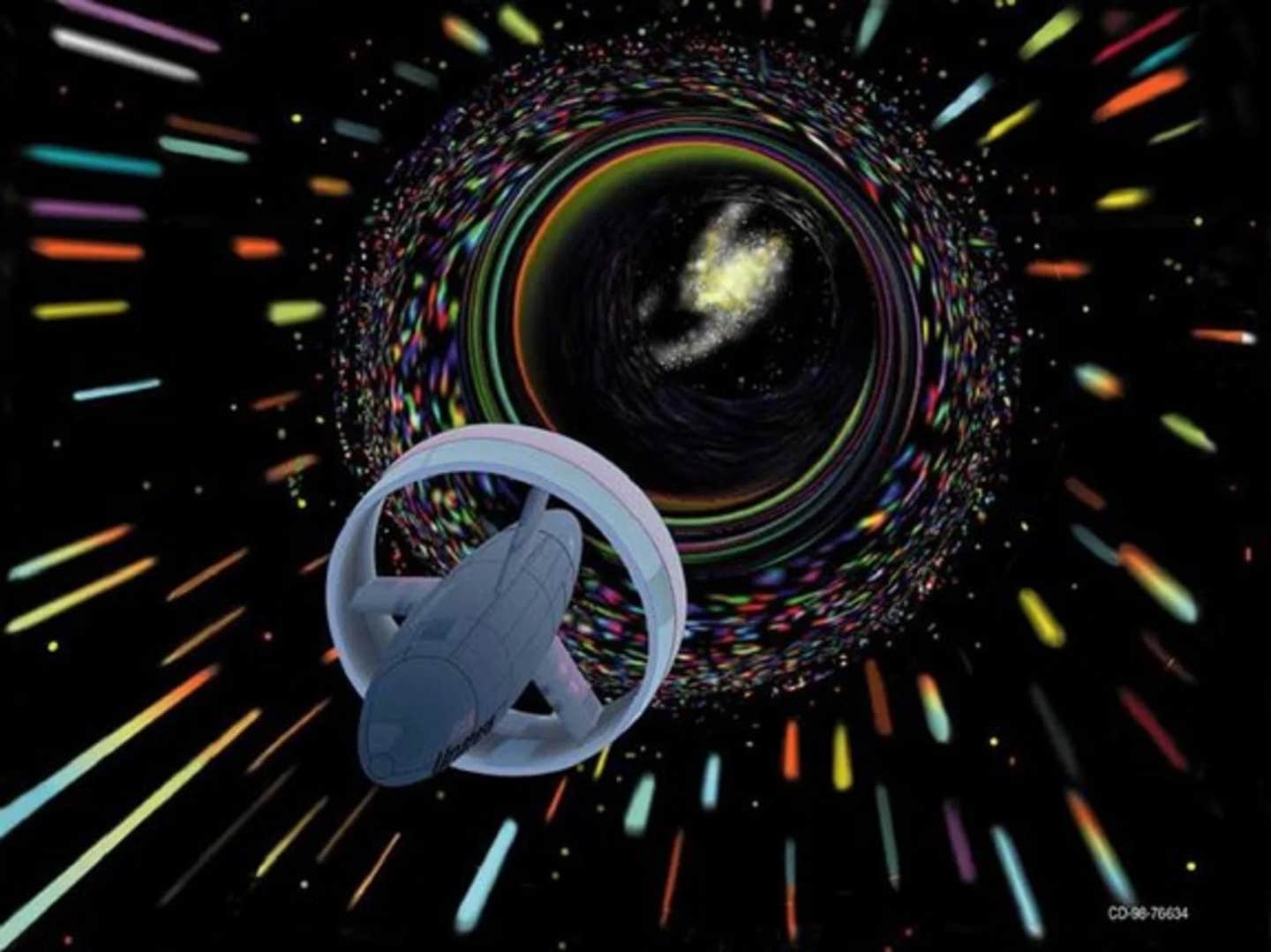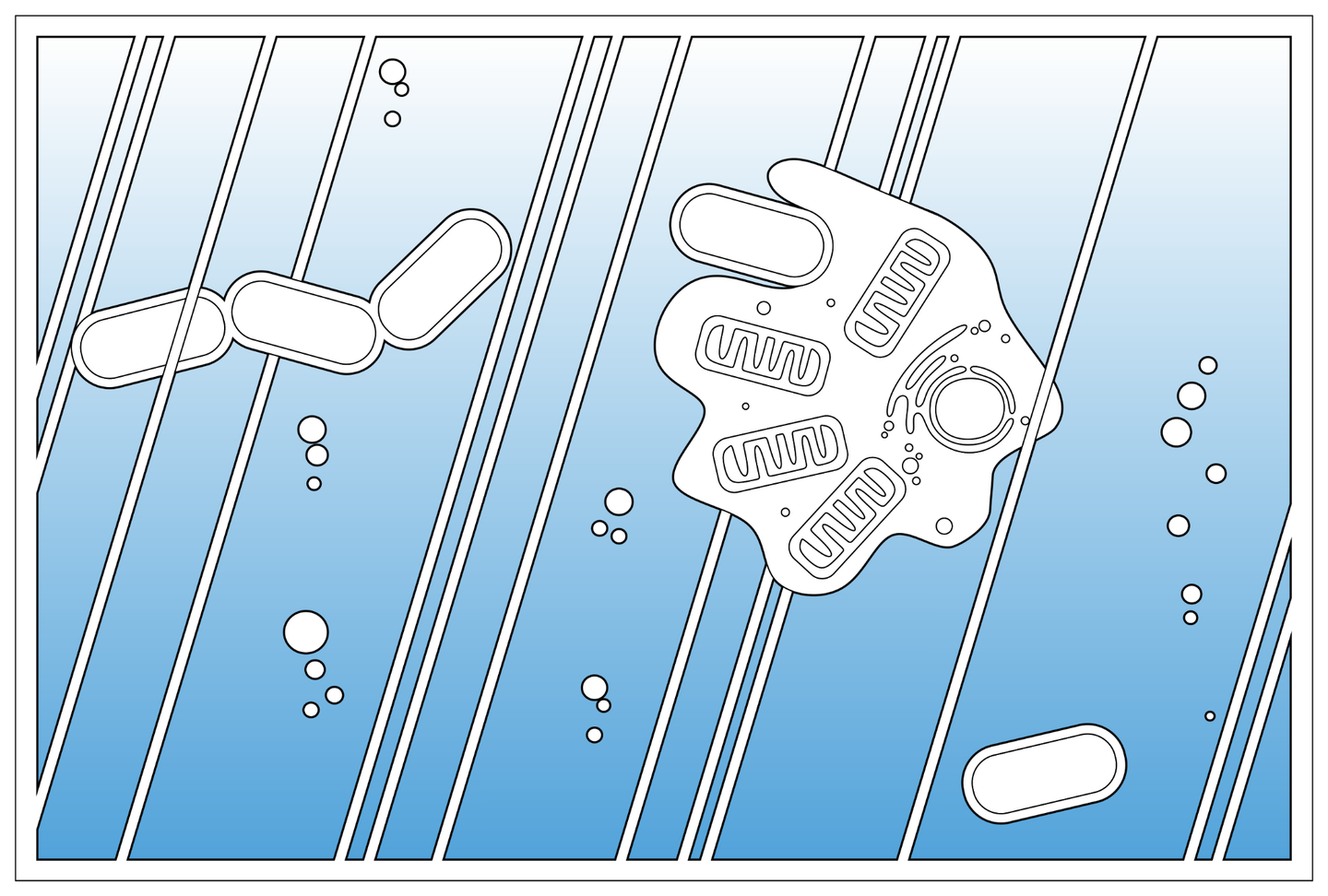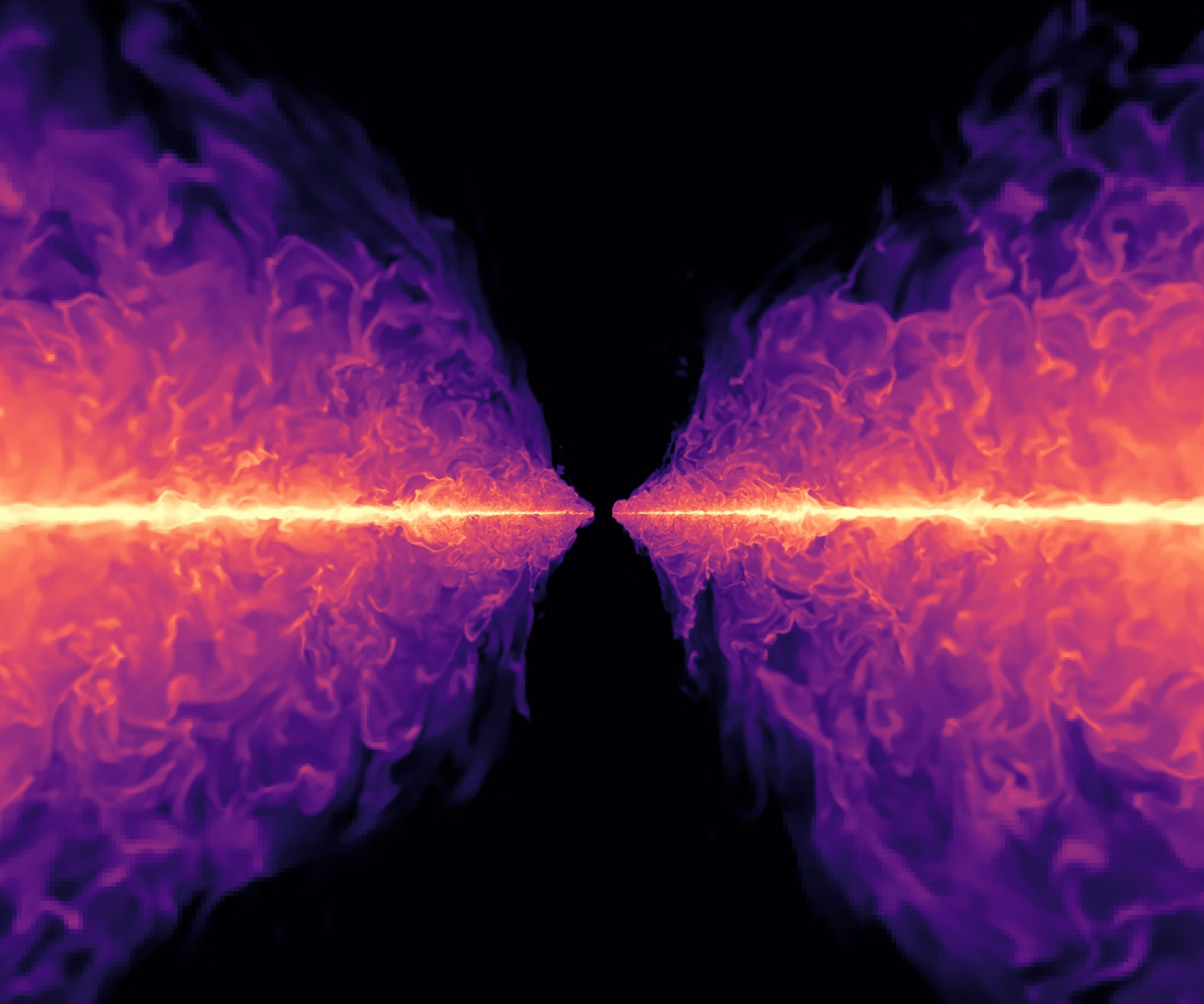Warp drive may be achievable sooner than expected, study finds
Warp drive is a concept that challenges Einstein’s Theory of Relativity by suggesting faster-than-light travel might be possible.

A spacecraft could sit within a warp bubble surrounded by a ring of negative mass that would compress space-time ahead of the ship and expand it behind, allowing for faster-than-light travel. (CREDIT: CC BY-SA 4.0)
For decades, movies and television series have sparked curiosity about the future, blending science with fiction in ways that inspire real-world innovation.
Among the most intriguing ideas is warp drive—a concept that challenges Einstein’s Theory of Relativity by suggesting faster-than-light travel might be possible by warping space and time.
In 1994, theoretical physicist Miguel Alcubierre introduced the idea of a space-time bubble that could contract distances ahead of a spacecraft while expanding them behind it. His model, known as the Alcubierre drive, suggested a loophole in relativity that could, in theory, allow faster-than-light travel. Yet, most scientists dismissed it as impossible due to extreme energy requirements.
Not everyone was ready to abandon the idea. Joseph Agnew, an undergraduate at the University of Alabama, set out to explore whether the theory held up mathematically. “If you fulfill all the energy requirements, they can’t prove that it doesn’t work,” he stated in a university press release.
Agnew explained how such a system would operate. “Suppose you have a craft that’s in the bubble. What you would do is, you’d compress space-time ahead of the craft and expand space-time behind it.” This description aligns with Alcubierre’s theory, which suggests movement without violating known physics—at least on paper.
Yet, a major hurdle remains. Einstein’s theory dictates that as objects move faster, their mass increases, making acceleration exponentially more difficult. To reach the speed of light, an infinite amount of energy would be required—an insurmountable barrier under current physics.
Despite these limitations, warp drive continues to fascinate scientists and science fiction fans alike. Often described as the ultimate breakthrough in space travel, it represents a dream of reaching distant stars in mere moments rather than lifetimes.
The idea may seem far-fetched, but science fiction has a long history of inspiring real advancements. Technologies once considered impossible—such as touchscreens, voice-controlled computers, and even 3D printing—began as speculative ideas. Could warp drive one day join that list?
Related Stories:
Einstein’s theory explains that nothing can travel faster than light due to the infinite energy required to accelerate an object to that speed. Photons, the particles of light, avoid this problem because they have no mass. Consequently, a spacecraft traveling at light speed is currently impossible.
There are, however, two potential loopholes. First, the focus could shift from achieving light speed to approaching it as closely as possible. Second, the Alcubierre warp drive theory proposes bending the laws of physics to circumvent the universal speed limit. By warping space-time, this drive could enable travel at ten times the speed of light without violating general relativity.
The theory posits that a spacecraft could sit within a warp bubble surrounded by a ring of negative mass. This ring would compress space-time ahead of the ship and expand it behind, allowing for faster-than-light travel.
Within the bubble, the spacecraft would still adhere to the universal speed limit while moving at extraordinary speeds relative to outside observers.
A significant challenge to this theory is the enormous amount of mass-energy required. To propel a spacecraft using the Alcubierre drive, one would need mass equivalent to that of Jupiter.
According to Einstein’s equation, E=mc², this represents an immense amount of energy, far beyond what the universe can currently provide.
Dr. Harold "Sonny" White, a NASA mechanical engineer and physicist, is working to address this issue. He believes it might be possible to reduce the mass-energy requirement by altering the shape of the negative mass ring. This could potentially lower the mass needed to around 700 kg.
White leads a team of physicists and engineers at NASA in building the White-Juday Warp Field Interferometer, a device designed to detect and generate the tiniest warp bubbles. While this technology might not immediately enable travel to distant galaxies like Andromeda, it represents a significant step toward making warp drive a reality.
Despite these advancements, we remain far from achieving interstellar travel and warp drive. Yet, ongoing technological progress brings us closer to finding the answers. Star Trek predicted the invention of warp drive in 2063. While that date remains in the future, continued research and innovation may one day turn this science fiction concept into science fact.
Other theories for the development of warp drive
Aside from Joseph Agnew's Alcubierre model theory, here are some other warp drive theories and concepts currently being explored:
White-Juday Warp Field Interferometer
- Harold "Sonny" White, a NASA scientist, proposed adjustments to the Alcubierre model to make the concept more feasible. He suggested that shaping the warp bubble into a torus could reduce the energy requirements by orders of magnitude, theoretically making it possible to create a smaller warp bubble around a craft.
- Challenges: Despite energy reductions in theory, creating even this smaller warp bubble still demands technologies and materials that are currently beyond our reach.
Casimir Effect and Negative Energy
- The Casimir effect demonstrates how quantum fluctuations between two closely spaced objects can create negative energy, which may contribute to warp drive development. This approach is still in the early stages and primarily focuses on understanding if and how we can harness negative energy on a larger scale.
- Challenges: Controlling and generating enough negative energy is currently beyond our technological capabilities, and more research into quantum field theory is needed.
Manipulating Extra Dimensions (Brane Cosmology)
- Some theories in string theory and brane cosmology propose that our universe may have extra spatial dimensions. If this is true, it might be possible to "shortcut" through these dimensions, effectively enabling faster-than-light travel without violating relativity. This idea is closely related to the concept of wormholes, another theoretical method for FTL travel.
- Challenges: This theory is still highly speculative and lacks empirical support, as no direct evidence of extra dimensions or brane structures has been found.
Warp Drive with Quantum Field Theory Adjustments
- Some researchers have explored modifications to quantum field theory that could make warp drives more feasible. This approach involves exploring how quantum fields interact with spacetime and whether these interactions can be controlled or utilized to create stable warp bubbles.
- Challenges: Current quantum field theory modifications remain largely theoretical, and experimental methods to test these ideas are not yet available.
Dark Energy Manipulation
- Since dark energy is thought to drive the accelerated expansion of the universe, some have theorized that manipulating dark energy could enable us to create similar expansion and contraction effects in local space around a spacecraft.
- Challenges: Dark energy is one of the least understood aspects of physics, and manipulating it remains speculative. Researchers would first need to identify a way to harness dark energy in controlled settings.
Each of these theories faces significant obstacles due to the requirement for exotic matter, negative energy, or extremely advanced technologies that we do not yet possess. However, advances in quantum field theory, energy manipulation, and fundamental physics could potentially make warp drive—or something like it—more feasible in the far future.
Note: Materials provided above by The Brighter Side of News. Content may be edited for style and length.
Like these kind of feel good stories? Get The Brighter Side of News' newsletter.



